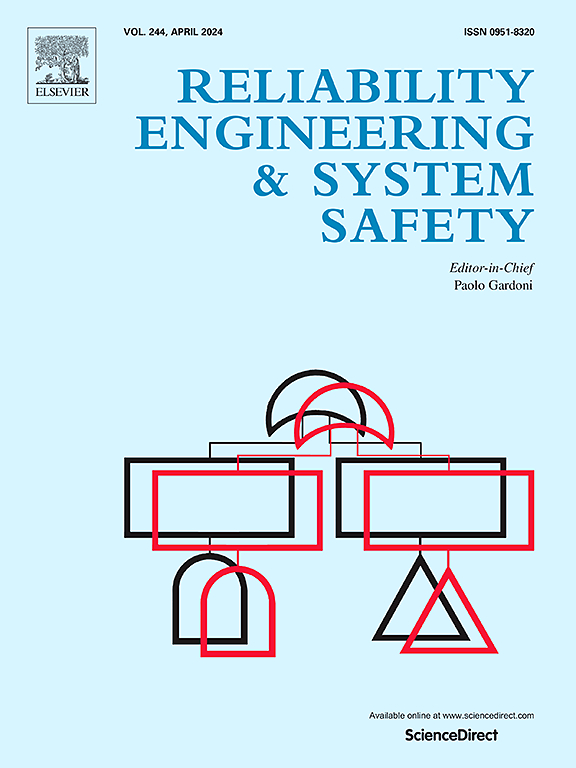Risk propagation mechanisms in railway systems under extreme weather: A knowledge graph-based unsupervised causation chain approach
IF 9.4
1区 工程技术
Q1 ENGINEERING, INDUSTRIAL
引用次数: 0
Abstract
Frequent and intensive adverse weathers can cause severe rail accidents through domino effect, posing significant challenges to railway safety and operational reliability. A detailed elucidation of the risk propagation mechanism across hazardous events is critical for effective risk management in rail transportation. Risk pathways involve various meteorological factors, infrastructure vulnerabilities, and consequences, in which each exhibits distinct causation strengths, trigger probabilities, severity levels, and high-impact points. To disclose the characteristics of weather-related railway domino effect accidents, this paper develops a novel railway causation analysis methodology based on an event logic graph. This framework enhances existing knowledge graph-based methodologies by emphasizing the evolution and logical progression of sequential hazardous events. Besides, an unsupervised accident causation chain linking technique is proposed, which integrates historical accident data into the knowledge graph to build a comprehensive graph database. It facilitates data-driven analysis of both structured and unstructured accident records without requiring laborious annotations. By thoroughly evaluating topological features and statistical indicators via a real-world dataset of weather-related railway accidents, key risk propagation patterns such as risk path dependence, path convergence, and risk escalation curves are recognized. Critical nodes including risk amplifiers, critical junctures, and marginal risk contributors within six critical domino chains are identified. These findings inform targeted risk mitigation strategies to prevent risk propagation and escalation. The proposed methodology and results offer theoretical support and actionable insights for enhancing safety and reliability management of railway systems under extreme weather conditions.
求助全文
约1分钟内获得全文
求助全文
来源期刊

Reliability Engineering & System Safety
管理科学-工程:工业
CiteScore
15.20
自引率
39.50%
发文量
621
审稿时长
67 days
期刊介绍:
Elsevier publishes Reliability Engineering & System Safety in association with the European Safety and Reliability Association and the Safety Engineering and Risk Analysis Division. The international journal is devoted to developing and applying methods to enhance the safety and reliability of complex technological systems, like nuclear power plants, chemical plants, hazardous waste facilities, space systems, offshore and maritime systems, transportation systems, constructed infrastructure, and manufacturing plants. The journal normally publishes only articles that involve the analysis of substantive problems related to the reliability of complex systems or present techniques and/or theoretical results that have a discernable relationship to the solution of such problems. An important aim is to balance academic material and practical applications.
 求助内容:
求助内容: 应助结果提醒方式:
应助结果提醒方式:


